LEGO virtuoso So Jin-ho (aka Colin Jin) first gained attention for his masterful reproductions of everyday s. He then shifted to exploring cultural heritage, which earned him an exhibition in Paris this year, the latest part of a “toy story” that began at birth.
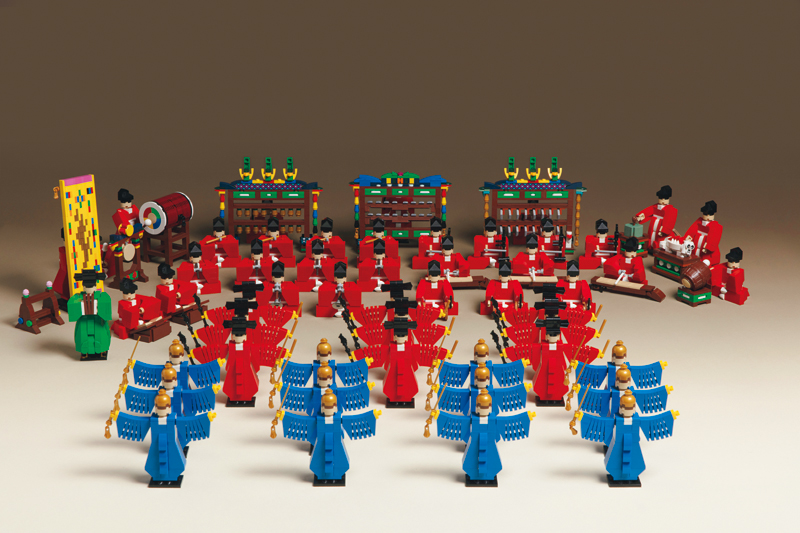
So’s rendition of Jongmyo Jeryeak is a true labor of love. d solely out of existing LEGO pieces, the masterpiece took him over a year and a half to complete.
Courtesy of So Jin-ho
Colin Jin was born in 1974, the same year that his father, So Jae-gyu, founded Hanlip Toys. Naturally, Colin grew up playing with all types of toys, including the interlocking plastic bricks of Danish toy company LEGO, whose name translates to “play well.” By his mid-twenties, he was designing his own LEGO creations, attracting attention for his replicas of everyday s. Soon after, he turned his focus to an entirely different subject: traditional Korean folk dance. Ever since, he has continued to explore Korean cultural heritage.
In October 2023, the artist’s first exhibition, Colin Jin’s HEstorical Lego, opened at the Moryham Exhibition Center in Seoul. The event offered a new perspective on traditional culture through replicas of tangible and intangible cultural heritage. The highlight was a LEGO reproduction of Jongmyo Jeryeak.
Jongmyo is a royal shrine in downtown Seoul that houses the ancestral tablets of kings and queens from the Joseon Dynasty (1392–1910). Jongmyo Jeryeak refers to the instrumental music, songs, and dances performed during memorial rites conducted at the shrine. The royal ancestral ritual and its music are inscribed on UNESCO’s Representative List of the Intangible Cultural Heritage of Humanity.
Crowds were enthralled by how the toy building blocks captured aspects of history and culture, but even more awe-inspiring was the intricate craftsmanship that reflected the essence of Korean art and aesthetics.
Colin, who has also overseen the Hanlip Toy Museum since 2007, cites his profound love for his family as the driving force behind his creative process. Between May and October, some of his creations are on display at the Korean Cultural Center in Paris.
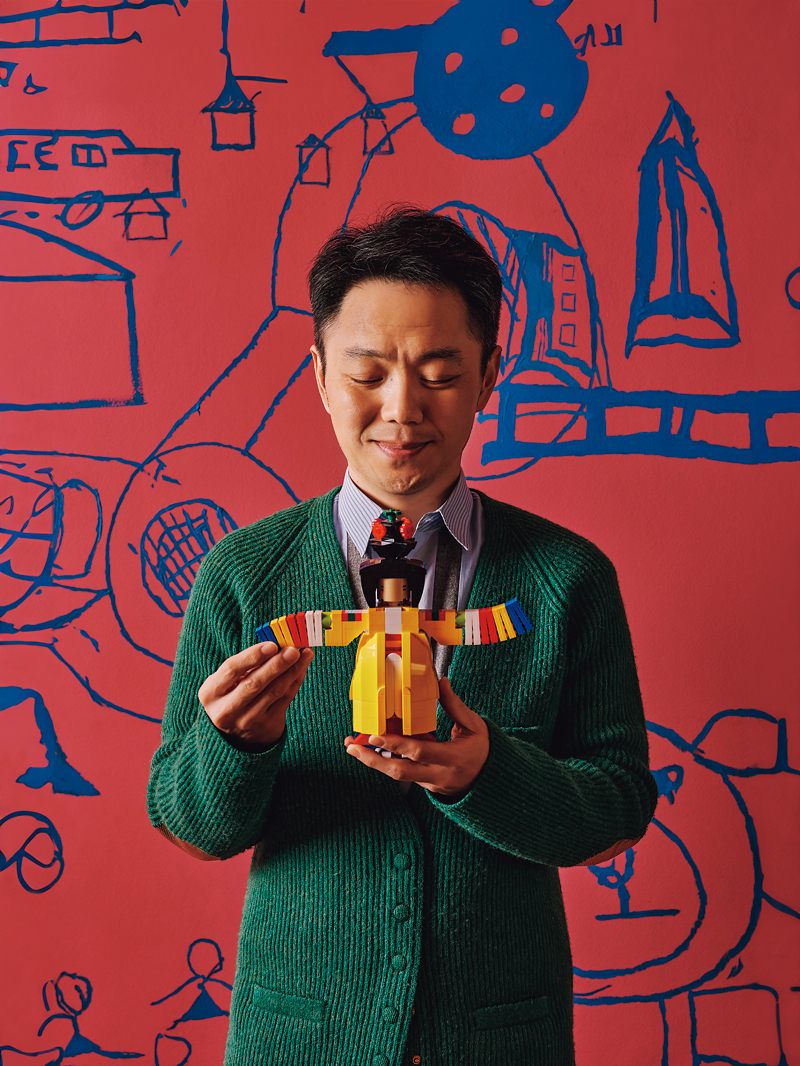
Artist So Jin-ho, who oversees the Hanlip Toy Museum, began producing works out of LEGO blocks in his mid-20s. Since then, he has showcased a wide variety of his creations, spanning from everyday s to cultural heritage reproductions.
Please tell us about your first exhibition.
LEGO art was initially just a hobby for me. That’s why I never thought of myself as an artist, let alone considered holding my own exhibition. It was actually the people around me who came up with the suggestion, telling me that it was a shame I kept all my work hidden away at home. With so many talented LEGO artists out there creating impressive pieces, I wasn’t sure if my work would stand out, but the support I received gave me the courage to give it a try. I really didn’t expect my exhibition to be met with such a positive response.
My wife holds a major in English literature and enjoys studying history in her spare time. One day, she suggested creating LEGO artwork based on seungmu, a type of Korean folk dance traditionally performed by Buddhist monks. That’s what got everything started.
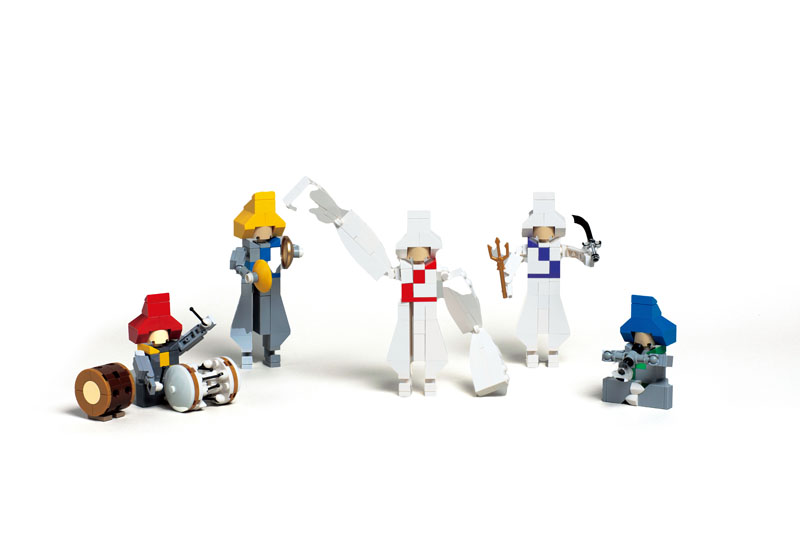
This work is a depiction of seungmu, one of Korea’s most iconic folk dances. It marks the beginning of So’s exploration of traditional culture in his work.
Courtesy of So Jin-ho
After completing the project, I felt compelled to expand beyond seungmu and explore traditional culture in general. That brought me down a rabbit hole that eventually led me to Jongmyo Jeryeak. It took me a year and a half to re it using only existing LEGO parts. I knew I needed to learn more if I wanted to represent aspects of traditional culture as accurately as possible in my work. That’s why I did a lot of research and even purchased books such as a copy of Jongmyo uigwe.
Are your audiences mostly LEGO fans?
Not necessarily. I’ve encountered cultural tour guides, students and teachers from a high school specializing in traditional Korean music, and even experts in Korean dance. They all shared a similar sentiment, which is that they take pride in preserving Korean traditions and often feel hurt when people around them dismiss older practices as outdated. That’s why they all thanked me for creating works that portray traditional culture in such a cool and modern way. I was really touched by their kind words.
The Cultural Heritage Administration’s Royal Palaces and Tombs Center is near Moryham, where I had my exhibition. Some of its staff visited the gallery during one of their lunch breaks and invited me to participate in a new exhibition they were putting together. I took them up on their offer and decided to a work depicting a painting called Ohyang chinjebanchado [the seventh panel of a folding screen depicting major rites at Jongmyo] for the exhibition that kicked off in May at Jongmyo. I chose this particular painting because it serves as the only surviving court record that offers a comprehensive glimpse into a musical performance conducted as part of royal ancestral rites in the Joseon Dynasty. Being able to show my work at a permanent exhibition held in a location of such historical significance is a tremendous honor.
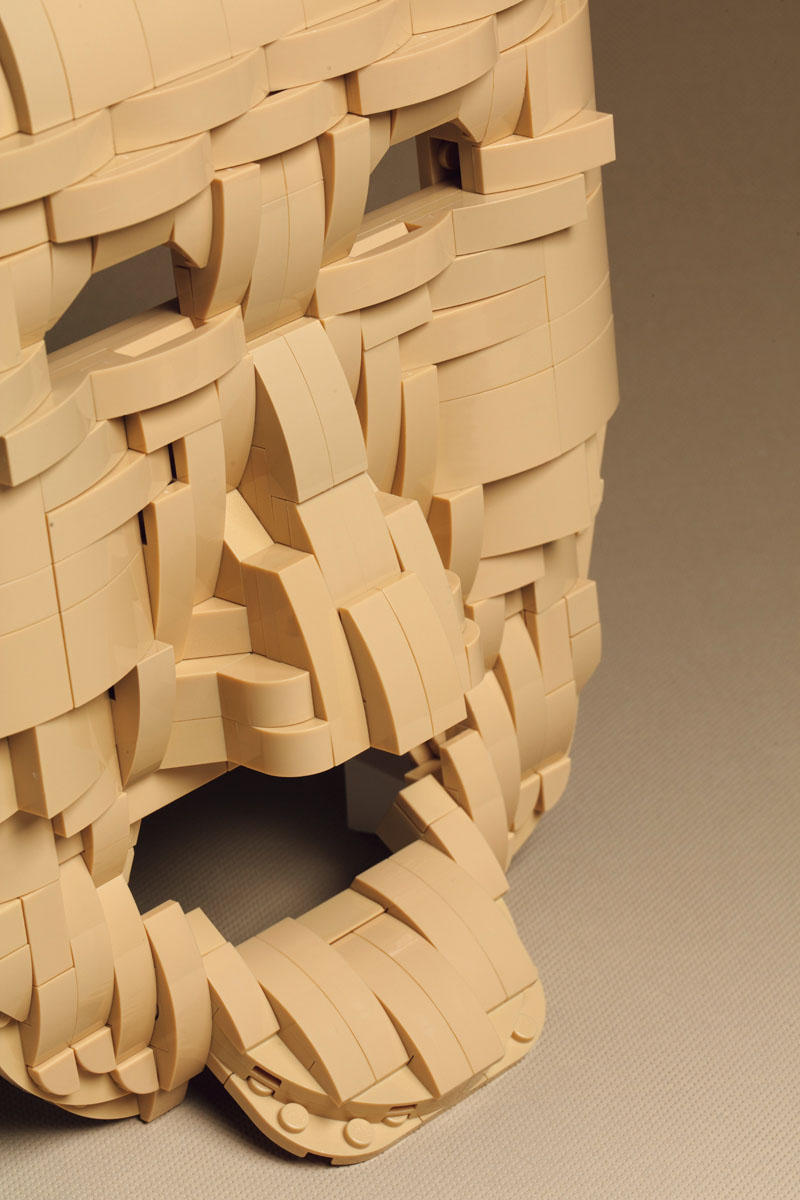
A reproduction of a traditional mask from Hahoe Folk Village in Andong, North Gyeongsang Province.
Courtesy of So Jin-ho
How have LEGO enthusiasts reacted?
In most cases, it’s parents who take their children to exhibitions and interpret the artworks for them. But in the case of my exhibition, it was the other way around. Most parents seemed to be there at the request of their children, who were the ones explaining how I incorporated pieces from certain LEGO sets. The kids were so excited that they were leading the conversations, and some even expressed their desire to try recreating some of the works. It felt gratifying to see that my work ignited something in them.
What inspires you?
I mainly get ideas from daily life. For example, one day, while watching the TV ary series Korean Cuisine and Dining, I noticed people were eating from a small dining table known as Naju soban. It occurred to me that I might be able to re that table with LEGO, so I decided to give it a try. Another time, when my daughter was in her second year of high school, I red all her essential school supplies using LEGO, including a pencil case and pencil sharpener. I even built a desk lamp.
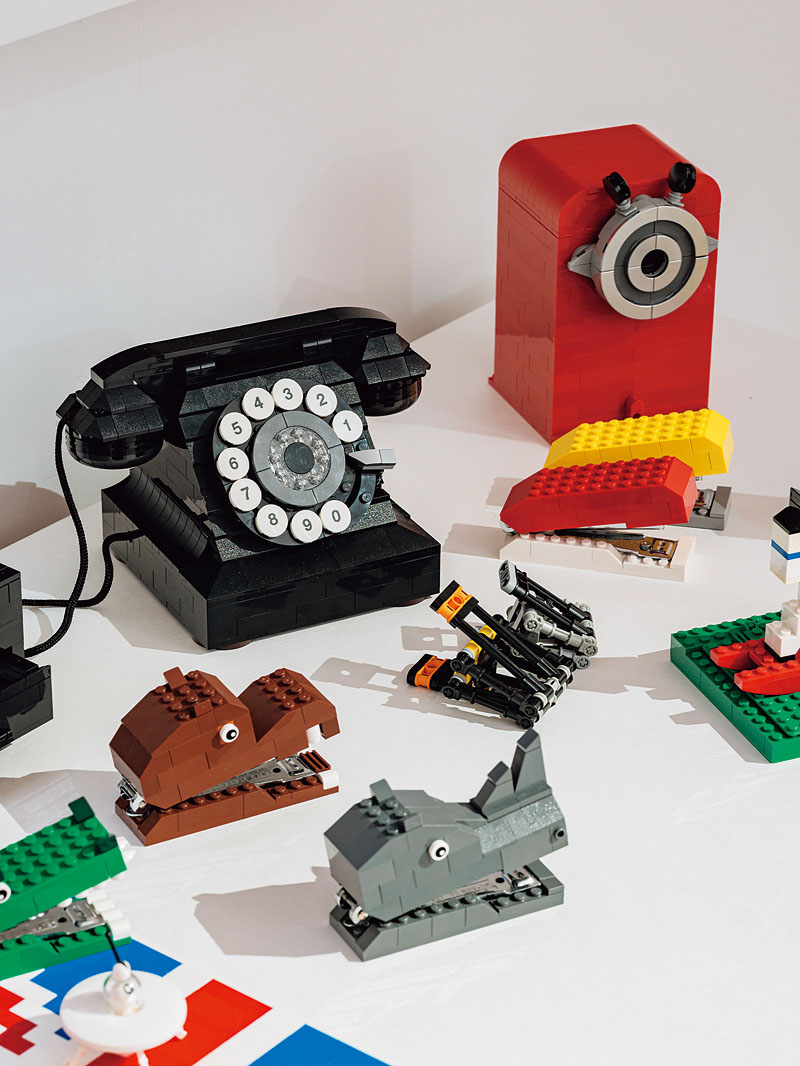
So red his daughter’s school supplies using LEGO. His desire to make his family proud is the driving force behind his work.
Courtesy of So Jin-ho
When did you first encounter LEGO?
I was in first grade at the time. My father took me with him to meet one of his friends who showed me some LEGO samples. This was before LEGO toys were officially imported to South Korea. I remember feeling sad that I couldn’t bring them back home with me.
I can still vividly remember the thrill I felt when I first stumbled upon Star Wars-themed LEGO while helping out at my father’s toy shop one day. Being a huge Star Wars fan, I fell in love at first sight. I bought them right away and assembled them following the instruction manual. Once I got the hang of it, I became interested in building my own creations.
Does the shape of existing LEGO parts limit your creativity?
here is a strict rule among LEGO artists that you shouldn’t alter or paint any existing pieces —just use them as they are. I think it’s this challenge of having to exercise one’s creativity within such constraints that makes LEGO art so appealing in the first place.
I also believe the breadth and depth of one’s experiences make it possible to overcome these limitations. Having built so many things out of LEGO, I’ve now reached a point where I’m able to mentally visualize how to assemble different pieces to achieve a specific outcome. My mind is able to turn Harry Potter’s broomstick into a Confucian scholar’s brush, animal teeth into beoseon [traditional socks], and duck feet into a king’s crown without relying on any drawings.
That said, it’s true that the limitation in materials can make it challenging to reproduce something to perfection. Sometimes, I find ways to simplify certain elements, but experts will quickly pick up on the differences. While I may not be able to fully replicate all the little details, I still need to be knowledgeable about them, so I spend a lot of time reading and studying.
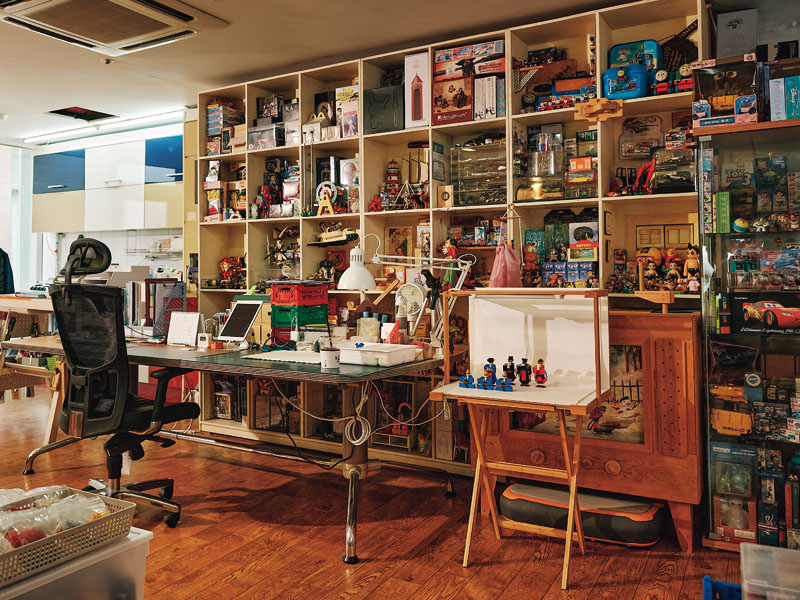
The artist’s work station inside the Hanlip Toy Museum. LEGO pieces for his creations are conveniently stored according to different categories.
What hobbies do you share with your family?
We tend to have long meals together. Since we talk while eating, we usually spend around an hour at the dinner table. We also share a love for Pixar’s animated films, so we make it a point to go to the movies together whenever there’s a new release. I believe in keeping a clear boundary between work and family life, so I rarely bring work home. That being said, when I complete a project, I always make sure to show it to my wife and daughter. They give me a lot of feedback, and I like to reflect it in my work.
Do you have any upcoming projects?
On a visit to the National Palace Museum of Korea, I had the opportunity to see the folding screen painting of Hwaseong haenghaengdo [Royal Parade to Hwaseong], which depicts various scenes of events hosted by King Jeongjo [r. 1776–1800], including the royal banquet held on the 60th birthday of his mother, Lady Hyegyeong. My family caught me mumbling to myself about how amazing it would be to replicate everything in LEGO form, and they encouraged me to have a go. The painting features over 2,000 figures, along with horses, cattle, and carriages. It would require an enormous amount of LEGO pieces, but I really want to reproduce it someday. I also dream of releasing my own LEGO products based on my designs.